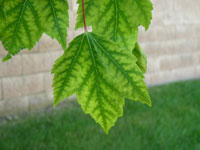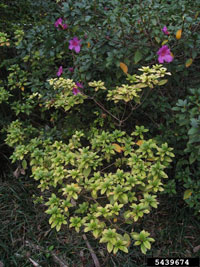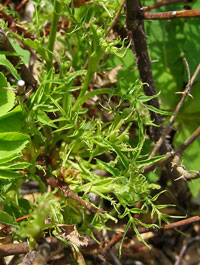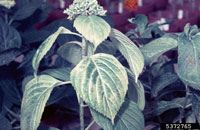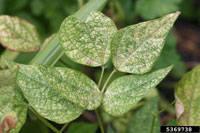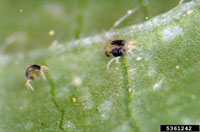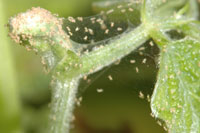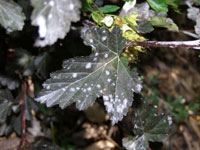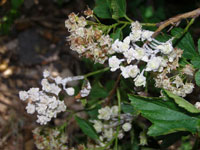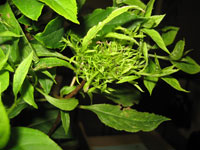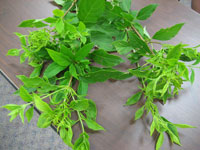Extension > Garden > Diagnose a problem > What's wrong with my plant? > Deciduous > Hydrangea > Leaves discolored white, yellow or pale green
Hydrangea > Leaves > Leaves discolored white, yellow or pale green
1 of 6
Iron Chlorosis
- Leaves are yellow with prominent green veins
- Most evident on new growth
- May be sporadic throughout the plant
- In severe cases, new growth becomes white, stunted and dies
- Most common in alkaline soils or heavy clay soils
- More information on Iron Chlorosis
2 of 6
Non-selective herbicide injury
(Round-up, Kleen-up, and other glyphosate products)
- Yellowing, wilting, browning leaves and eventual death of foliage and plants
- Damage usually appears first in new tissues
- Shrubs sprayed during the summer or fall may not have noticeable injury until the following season when leaves appear as stunted, narrow, strap-like, and chlorotic
3 of 6
Two-spotted spider mite
Tetranychus urticae
- White to yellow stippling on foliage
- Heavy infestations will cause leaves to turn white, yellow and ultimately grayish bronze; premature leaf drop may occur
- Webbing may be present
- Mites usually appear in late June to August; they are more prevalent in hot, dry weather
- Adult spider mites are small(approximately 1/50 inch long) and are hard to see; they are yellow to dark red with dark spots (need magnification to see)
- More information on two-spotted spider mite
4 of 6
Powdery mildew
Erisyphe polygoni
- White spots or blotches on leaves
- In severe cases leaves and young shoots may be completely covered with white powdery fungal growth
- Leaves may be stunted, curled or puckered
- Red or purple blotches may occur on upper leaf surfaces
- More information on powdery mildew
5 of 6
Hydrangea Chlorotic Mottle Virus (HCMV)
- Light green, green and yellow mottling on leaves
- Reddening and curling or deformation of leaf tissue
- Symptoms most visible in spring and fall
- Infects only cultivars of Hydrangea macrophylla
6 of 6
Oystershell scale
Lepidosaphes ulmi
- Light to moderate infestations show little or no symptoms
- Severe infestations can cause chlorotic, stunted foliage
- Dieback and cracked bark can result from heavy infestations
- Light to dark brown, elongated, 1/10 to 1/8 inch long oyster-shell shaped scales found on bark
- More information on Oystershell Scale





